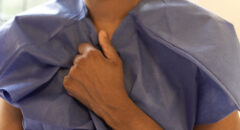
Ever wonder why you go into a store and end up spending MORE than you originally planned?? The placement of items on store shelves is not by chance. Here, the experts explain how they think and how items are placed to make you purchase.
Top Shelf
On the shelf: Smaller brands, regional brands, gourmet brands
Explanation: The items here give “tone and texture” to the shelf layout, Liebmann says, helping the supermarket stand out from its competitors. These smaller brands usually don’t have the budgets to pay for more favorable placement.
Top shelf tip: The specialty items found on the top shelf are generally chosen by local store managers, not determined by the supermarket’s central headquarters. If you’d like your store to stock a particular item on this shelf, talk to the manager.
SIGN UP FOR OUR DAILY NEWSLETTER HERE!
Second and Third Shelves From the Top
Explanation: Best sellers and other leading brands
“Brands that sell best are always in what’s called the ‘bull’s-eye zone,’ front and center, right in your sight line. It is the best placement, and the manufacturers have to pay for it,” says Childress. Tesler adds: “There’s no advantage for the supermarket to show you the lowest-priced item in the most effective spot. So here you tend to see higher-priced items or items with the highest markup.” Secondary brands hoping to benefit from being shelved next to the leaders also pay for placement in the bull’s-eye.
2nd & 3rd Shelf Tip: Look below the bull’s-eye to find similar products for a lot less, says Childress.
READ: Grocery Shopping On A Diet
Lower Shelf (Kids’ Eye-Level)
On the shelf: Products with kid appeal
Reasoning: “Kids can react and reach out to a product,” says Tesler.
Shopping tip: Leave the children at home, if possible. Otherwise “you are bound to spend more money,” Liebmann says—10 to 40 percent more, according to industry studies. “If kids are with you, give them something right up front—a balloon, a lollipop, juice, some fruit, a kid-size shopping cart—to help keep them happy and calm and to prevent them from putting things in your basket.”
Bottom Shelf
On the shelf: Store and private-label brands; oversize and bulk items
Reasoning: “Store brands go on shelves four and five because people who buy store brands will always hunt for them,” says Childress. “The supermarkets carry bulk items to compete with warehouse clubs like Sam’s and Costco,” Liebmann explains, and bulk items are awkward to store anyplace but the bottom shelf.
Bottom shelf tips: “Store brands are usually close to the market leader in quality yet less costly,” says Liebmann. Underhill adds: “The same manufacturer that makes the branded product often manufactures the house brand. It may be for all practical purposes the same product in a different package.” When buying bulk items, don’t go overboard. “Americans often buy more than we need with the idea that we’ll store it, ” says Underhill. “If you have 64 rolls of toilet paper, it isn’t really a bargain; it’s money out of your pocket that could be earning interest in the bank instead. And the more you have, the more you tend to use.”
Visit the BlackDoctor.org Food center for more helpful articles and tips.
Originally published here.








